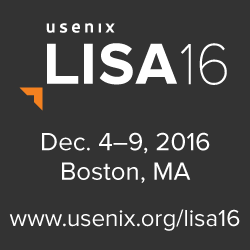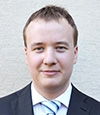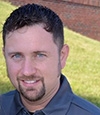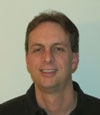Conference Program
A variety of topics are being covered at LISA15. Use the icons listed below to focus on a key subject area:
Follow the icons throughout the Conference Program below. You can combine days of training or workshops with days of Conference Program content to build the conference that meets your needs. Pick and choose the sessions that best fit your interest—focus on just one topic or mix and match.
The conference papers are available to registered attendees immediately and to everyone beginning Wednesday, November 11, 2015. Everyone can view the abstracts and the Proceedings front matter immediately.
Proceedings Front Matter
Proceedings Cover | Title Page and List of Organizers | Table of Contents | Message from the Program Co-Chairs
Full Proceedings PDFs
![]() LISA15 Full Proceedings (PDF)
LISA15 Full Proceedings (PDF)
![]() LISA15 Proceedings Interior (PDF, best for mobile devices)
LISA15 Proceedings Interior (PDF, best for mobile devices)
Full Proceedings ePub (for iPad and most eReaders)
![]() LISA15 Full Proceedings (EPUB)
LISA15 Full Proceedings (EPUB)
Full Proceedings Mobi (for Kindle)
![]() LISA15 Full Proceedings (MOBI)
LISA15 Full Proceedings (MOBI)
Download Proceedings (Conference Attendees Only)
Wednesday, November 11, 2015
| 8:00 am–8:45 am | Continental Breakfast | Thurgood Marshall Ballroom Foyer | |||
| 8:45 am–9:00 am | Wednesday | ||||
|
|
|||||
| 9:00 am–10:30 am | Wednesday | ||||
|
|
|||||
| 10:30 am–11:00 am | Break with Refreshments | Thurgood Marshall Ballroom Foyer | |||
| 11:00 am–12:30 pm | Wednesday | ||||
| Thurgood Marshall North/East | Thurgood Marshall South | Thurgood Marshall West | Lincoln 3 | Lincoln 4 | Lincoln 2 |
|
|
|
|
|
|
|
| 12:30 pm–2:00 pm | Conference Lunch on the Expo Floor | Exhibit Halls B South and C | |||
| 2:00 pm–3:30 pm | Wednesday | ||||
| Thurgood Marshall North/East | Thurgood Marshall South | Thurgood Marshall West | Lincoln 3 | Lincoln 4 | Lincoln 2 |
|
|
|
|
|
|
|
| 3:30 pm–4:00 pm | Break with Refreshments on the Expo Floor | Exhibit Halls B South and C | |||
| 4:00 pm–5:30 pm | Wednesday | ||||
| Thurgood Marshall North/East | Thurgood Marshall South | Thurgood Marshall West | Lincoln 3 | Lincoln 4 | Lincoln 2 |
|
|
|
|
|
|
|
| 5:30 pm–6:30 pm | Expo Happy Hour, Sponsored by Oracle | Exhibit Halls B South and C | |||
| 6:30 pm–7:30 pm | Poster Session in the Atrium | Wednesday | |||
The poster session will include posters by the authors of all of the accepted papers, plus DevOps Is Improv: How Improv Made Me a Better Sysadmin, by Brian Sebby, Argonne National Laboratory. |
|||||
Thursday, November 12, 2015
| 8:00 am–9:00 am | Continental Breakfast | Thurgood Marshall Ballroom Foyer | ||||
| 9:00 am–10:30 am | Thursday | ||||
|
|
|||||
| 10:30 am–11:00 am | Break with Refreshments on the Expo Floor | Exhibit Halls B South and C | ||||
| 11:00 am–12:30 pm | Thursday | |||||
| Thurgood Marshall North/East | Thurgood Marshall South | Thurgood Marshall West | Lincoln 3 | Lincoln 4 | Lincoln 2 | Lincoln 5 |
|
|
|
|
|
|
|
|
| 12:30 pm–2:00 pm | Conference Lunch on the Expo Floor | Exhibit Halls B South and C | ||||
| 2:00 pm–3:30 pm | Thursday | |||||
| Thurgood Marshall North/East | Thurgood Marshall South | Thurgood Marshall West | Lincoln 3 | Lincoln 4 | Lincoln 2 | Lincoln 5 |
|
|
|
|
|
|
|
|
| 3:30 pm–4:00 pm | Break with Refreshments | Thurgood Marshall Ballroom Foyer | ||||
| 4:00 pm–5:30 pm | Thursday | |||||
| Thurgood Marshall North/East | Thurgood Marshall South | Thurgood Marshall West | Lincoln 3 | Lincoln 4 | Lincoln 2 | Lincoln 5 |
|
|
|
|
|
|
|
|
| 6:30 pm–8:30 pm | LISA15 Conference Reception | Exhibit Halls B South and C | |||
Friday, November 13, 2015
| 8:00 am–9:00 am | Continental Breakfast | Thurgood Marshall Ballroom Foyer | |||
| 9:00 am–10:30 am | Friday | ||||
| Thurgood Marshall North/East | Thurgood Marshall South | Thurgood Marshall West | Lincoln 3 | Lincoln 4 | Lincoln 2 |
|
|
|
|
|
||
| 10:30 am–11:00 am | Break with Refreshments | Thurgood Marshall Ballroom Foyer | |||
| 11:00 am–12:30 pm | Friday | ||||
| Thurgood Marshall North/East | Thurgood Marshall South | Thurgood Marshall West | Lincoln 3 | Lincoln 4 | Lincoln 2 |
|
|
|
|
|
|
|
| 12:30 pm–2:00 pm | Conference Luncheon | Exhibit Hall B South | |||
| 2:00 pm–3:30 pm | Friday | |||
| Thurgood Marshall North/East | Thurgood Marshall South | Thurgood Marshall West | Lincoln 3 | Lincoln 4 |
|
|
|
|
|
|
| 3:30 pm–4:00 pm | Break with Refreshments | Thurgood Marshall Ballroom Foyer | |||
| 4:00 pm–5:00 pm | Friday | ||||
|
|
|||||
















































































































connect with us